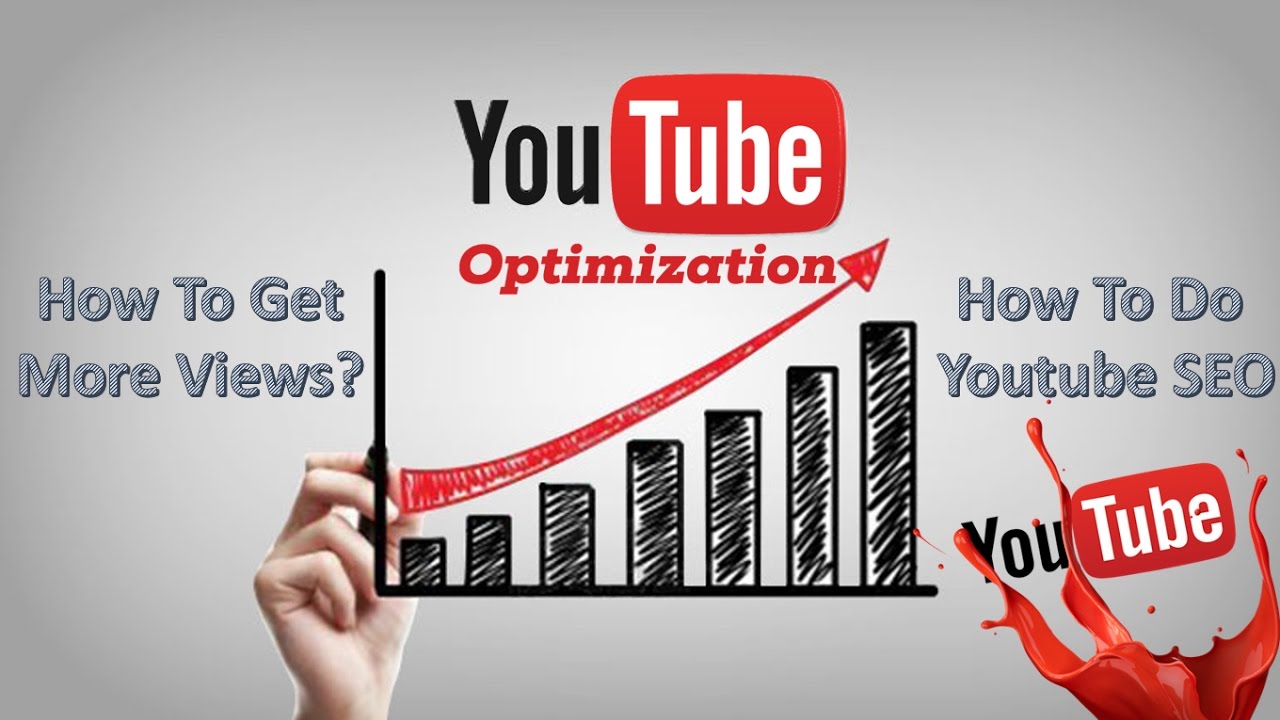
To rank high in Google, optimizing your blog's title is not enough. The web crawler wants to find keywords within your content, and a basic SEO strategy will make it easier for Google to index and display your content. Headings should also be considered when optimizing blogs for SEO. These allow search engines and readers to navigate your content. When using headings, be sure to include keywords and phrases in the beginning, middle, and end of each section.
Meta description
When writing your meta description for SEO blog, make sure to use an organic tone. You can answer users' queries with your meta description, and show off your high-quality material. Users will not like a website that looks spammy. You'll get more clicks if you write for people and not robots. Here are some helpful tips for writing compelling meta descriptions.
Make it interesting. Use your main keyword as your meta description. Google doesn't count your meta description in indexing pages, but it can help draw users' attention. Keep your meta description between 140 to 160 characters. Bold the most crucial words. A call to action should be included in the description, such as a link that takes you to your website. A great meta description should also include a call to action.
Meta description is a great way to promote your company. It is an excellent way to get users' attention and persuade then to click the link. A quality meta description will increase website traffic and help you sell more. To encourage users, a call for action should be placed at the end. If your description is too long or contains outdated information, your meta description may be useless.
A meta description not only makes your website more readable, it can also help you increase your click through rate. The meta description, when used correctly can improve your organic traffic as well as your rankings. Google's search engine result pages play a minimal role in your meta description. If your meta description does not meet the required standards, your page could be ranked on Page Four instead of Page One. It's worth including a meta-description even if your blog has a low number of clicks.
Keywords in the title
Make sure you are using focused keywords in the title. This will help you get the most out your SEO blog post. The title of your article will help you determine the direction of the content and the likelihood that it will reach your target audience. Search engines summarise web pages based upon the keywords found in the content. These crawlers have advanced their technology to be able to judge the quality content on the Web. In order to increase your articles' search ranking, you should include specific keywords in their titles.
If you own a gym, use phrases related to crossfit training or crossfit gyms. Use only one keyword per article. Too many keywords can make your article appear spammy to search engines. This will make your content less valuable for your readers. Your articles will rank higher for long-tail keywords than they do for short-tail keywords. These phrases are a great method to rank higher on Google for a specific keyword.
Your SEO blog title should be between 60 and 70 characters. The title tag should include the focus keyword as close to the start as possible. You should also use your chosen keyword to convey the benefit of your article. Keyword stuffing, boilerplate titles, and keyword stuffing are bad practices. Google warns you against keyword stuffing. Therefore, make sure you use a strong focus keyword in your title and make sure that your audience can understand what it will get from your content.
It is only half of your battle to include keywords in the title. The title of your article should be at least 60 characters long and not exceed 575 pixels. Make sure your title lives up to the promise you promised in the title, and make it easy for people to scan it and read. SEO is about planning. You should make sure that your title is as effective and relevant as possible.
Links to internal resources

There are many methods to increase search engine optimization (SEO), on your website or blog. To direct users to different pages within your website, one option is to use internal linking. These links can be used to direct users to different pages or products. This not just improves the user's experience but also enhances search performance. Internal links are not like backlinks. It is unlikely that readers will find them on their very own. But using internal links in the right places is one way to achieve this.
SEO-friendly SEO tips include adding internal links to your blog. This will help you attract and keep readers. Links can be created in many different ways by different websites. Therefore, it is crucial to choose the right anchor text and words for your link strategy. In addition to using relevant words, internal links can help increase your reader's attention and get them to stay longer on your website. You want to get the best out of your internal links. Make sure they point back at relevant content and offer a helpful solution.
Internal links should always point to the main keyword. Google is unlikely to penalize you if you use exact-match anchor words. However, make sure that the anchor text matches what you are linking to. It shouldn't be keyword-stuffed. To boost your ranking, do not alter your anchor text. This tactic is against Google's webmaster guidelines. This method is more effective than you might think.
A way to optimize internal link optimization is to create content related to core services. A Columbus landscaping company generates more searches than the "best smartphone" phrase, with 390 searches per month. You can improve your SEO by strategically including internal links within your blog posts. A good way to do this is to anticipate the questions that users will have when they browse your website.
Schema markup
Schema markup can be included in your blog posts to increase your search engine ranking. To create schema markup, visit Google Structured Data Markup Helper. You simply need to enter the URL for your website, select a category, then copy and paste the HTML code. This tool generates a tag manipulation tool and renders the page in a separate window. You can then click on individual elements to tag them.
There are three types if schema markup: NewsArticle TechArticle or Microdata. Depending on what the post contains, each type of schema markup can have different flags. NewsArticle, on the other hand, is for articles that cover current events. TechArticle can have flags indicating the technical content in the article. For example, a HowTo article may have flags that indicate the author's technical level, the program used, and any dependencies.
Google has made it much easier to create schema. It allows you tag data and shows similar content in search results. To increase brand awareness, schema markup should be used in blog posts. If you are a small business with a local address, schema can be used to advertise your business. The schema can also be used to promote your business and events. The benefits of using schema markup in your SEO blog post are numerous. These links will help you to decide what schema markup to use.
You can also use schema to optimize content. The markup is used to help search engines identify the elements of a site. Schema markup is useful for blogs about food. It can identify ingredients, steps to follow, and nutritional values. Schema is also useful for reviewing blogs. The basic principle behind search engine ranking is that the more relevant your content to a query by a user, the better you will be.
Copyright for image

You must get the permission of the owner before using any image on your SEO blog. Many PR agencies won't share images on their websites. This could mean that you will not be allowed to use the image. To find out who owns the image, contact them directly. Most times the owner is happy to give permission for you to use the photo. These tips will help you comply to the law.
Google images should not be used. You should contact the owner of an image before using it on your blog. Google allows you search for images but you must get permission before you can use them. You can request permission to use the image if you have trouble finding it. This will ensure you don't violate any copyrights. Image copyrights could make all the difference between a successful SEO blog or a website that is removed from search engines.
You should ensure that you check the copyrights for any image that you plan to use on your blog. It's illegal to use images from Google Images. You can't steal images from Google Images without permission. This will discredit the original image creator and put you at risk of legal repercussions. You can use public domain or fair-use photos if you have permission from the owner. An intellectual property attorney can help you if you still have questions.
Images used for SEO blogs should have the same author and attribution. Funny or creative photos are more likely for use in SEO. However, you should always review the license terms. While some images can be used for free, others are subject to certain restrictions. You shouldn't use any images unless you know who the author is. If the images aren't royalty-free, it could be a violation of copyright. Even worse, you may be subject to a lawsuit which could result in a substantial fine.
FAQ
What Content Strategy can I use to improve my ranking?
Content strategy is the process of planning how much content you will produce over time. This includes keywords, topics and other information about you company. This will ensure you don't write too much or not enough content.
What are the top tools for on-page SEO?
Video embeds (image alt tags), structured data markup, video and internal links are all great for on-page SEO. You can learn more about these types of issues in this article.
What will it cost to rank high in search results?
Prices for search engine optimization depend on the type and scope of your project. Some projects only require minor changes to an existing website while others will require a complete redesign. There are also ongoing monthly fees covering keyword research and maintenance.
Statistics
- 93%of online experiences today begin on search engines. (marketinginsidergroup.com)
- These guides are designed and coded 100% from scratch using WordPress. (backlinko.com)
- Sean isn't alone… Blogger James Pearson recently axed hundreds of blog posts from his site… and his organic traffic increased by 30%: (backlinko.com)
- : You might have read about the time that I used The Content Relaunch to boost my organic traffic by 260.7%: (backlinko.com)
- And 90%+ of these backlinks cite a specific stat from my post: (backlinko.com)
External Links
How To
What you need know about duplicate Content and SEO
Duplicate content is an issue for both webmasters and search engines alike. There are two types. Multiple pages on a site may contain identical content. Internal duplicates are when there is more than one page. External duplicates occur when pages contain similar information to other URLs.
Internal duplication refers to pages that contain identical text or images. This is due to poor copywriting skills. Poor copywriting can mean that you haven’t created unique content for each page. This can lead to internal duplicates.
External duplication occurs when a single page contains similar information to other URLs. For example, if you have a product page listing all of your products and a category page listing all of those same products, you've created external duplication.
Google does not penalize websites for duplicate content. It will penalize sites who attempt to manipulate the algorithm to rank better. Duplicate content on your website? Make sure it's not manipulative.
Link building is the most popular way to alter Google's algorithm. Link building involves creating hyperlinks between your website (and other websites). These links may appear unnatural, and Google might devalue your website.
Some ways to avoid link manipulation include:
-
Avoid low-quality backlinks that are spammy.
-
Use anchor texts that are relevant for your website.
-
Create unique content on each page of your website.
-
Maintaining high-quality content.
-
A domain name that is unique and memorable.
Avoid worrying about duplicate content. Focus on creating unique content on every page of your website. This will improve your search engine rankings.